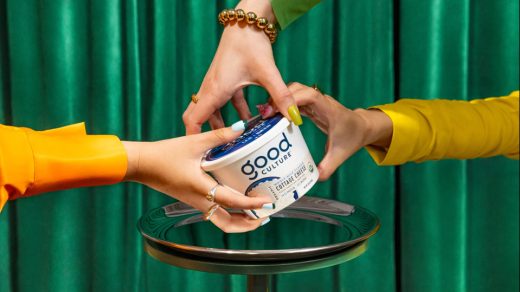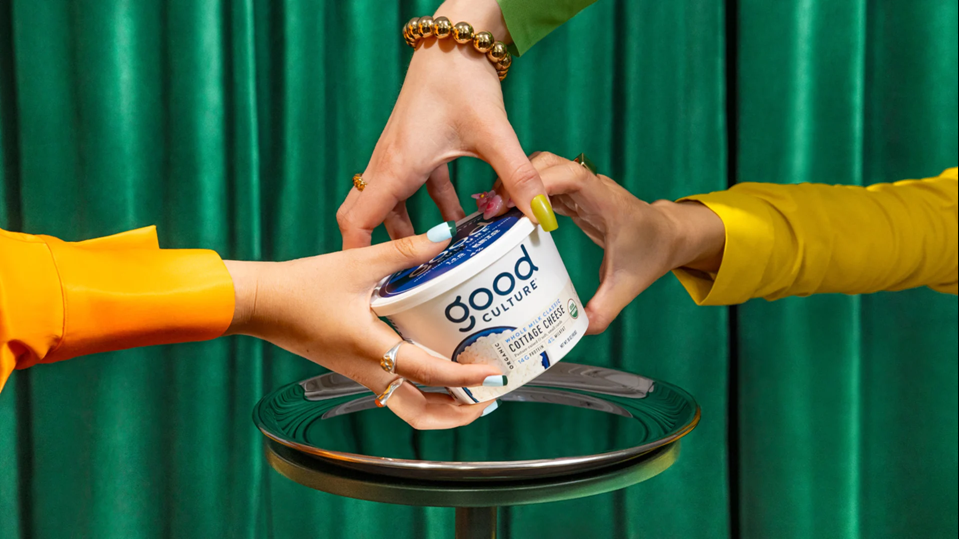Inside the brand that made cottage cheese cool again
August 13, 2024
Inside the brand that made cottage cheese cool again
With good ingredients, good branding, and some good TikTok vibes, Good Culture has exploded.
Cottage cheese was stale.
And around a decade ago, Jesse Merrill went to the supermarket and took notice.
“There were like cobwebs on the shelf,” he says. “It looked like products that hadn’t been innovated since the ’70s. Cottage cheese was [once] actually bigger than yogurt, and then just fell off due to a complete lack of innovation.”
Merrill had gone to the store with a purpose. He says he’d joined Honest Tea as VP of marketing at a time when the company was making less than $10 million in annual revenue, and in five years he helped rocket it to $80 million a year and, ultimately, an acquisition by Coca-Cola. He wanted to launch his own mission-led brand, so he was out hunting for inspiration. And as he studied that shelf stocked with a product that was high in protein and low in sugar—but woefully dated in its design and secondary ingredients—he found it.

Soon enough, he and cofounder Anders Eisner launched Good Culture, a brand they sought to be the antithesis of everything in the cottage cheese realm at the time.
“It was about a $1.1 billion category when I entered the space, so a sizable category, [but] the category growth was kind of flat or in decline for decades,” Merrill says. “So for me, being a marketer, being a brand builder, I just saw that as a huge opportunity.”
And it paid off: What was once a sleepy vestige of diet-food culture left over from the ’70s is now a booming $1.52 billion business. Good Culture is available in more than 16,000 stores, is the second-best-selling branded cottage cheese behind dairy stalwart Daisy, and hit $100 million in revenue last year. Representatives for the company say it is currently on pace to double that in 2024.
Here’s how.
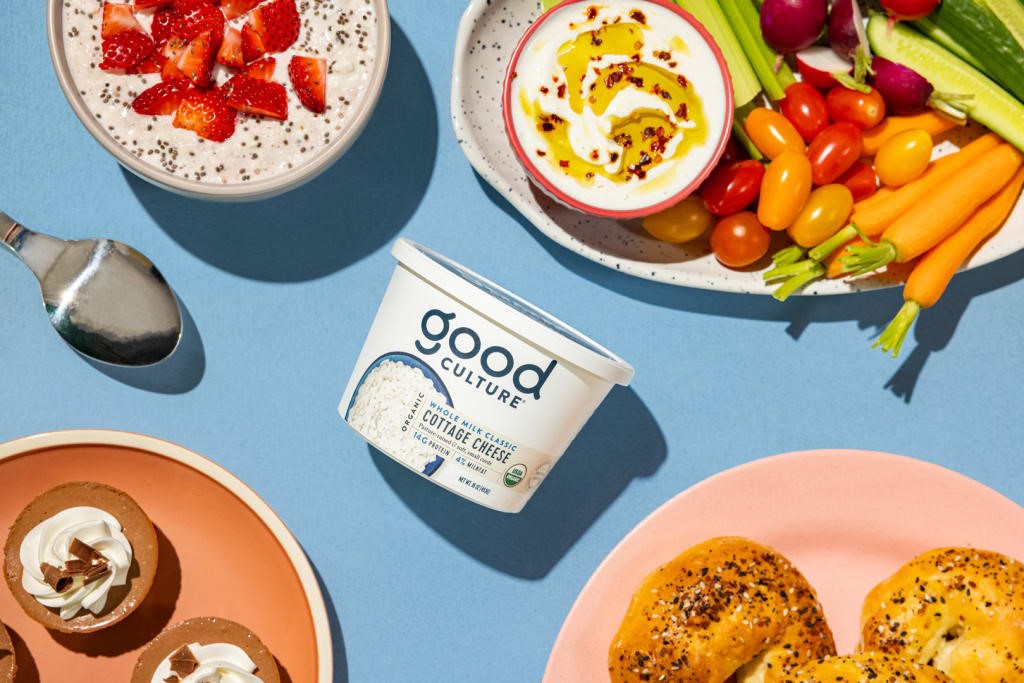
A COTTAGE INDUSTRY
As Merrill was working to build Good Culture, something else happened that would prove to be critical to the brand: He got sick. Specifically, he was diagnosed with the autoimmune disease ulcerative colitis. Facing a chronic condition, he consulted an integrative specialist and radically changed his diet. He says that by eating a strict regimen of cultured foods like kimchi and sauerkraut, along with cultured dairy, grass-fed meat, cooked vegetables, and fruit, his symptoms subsided dramatically and eventually cleared.
He credits the experience with shaping Good Culture’s approach to its ingredients.
“I have clear guardrails in terms of what ingredients I will use and what ingredients I won’t use based on that healing experience,” he says. “And it really, really reinforced and underscored my belief that you can heal your body through food.”
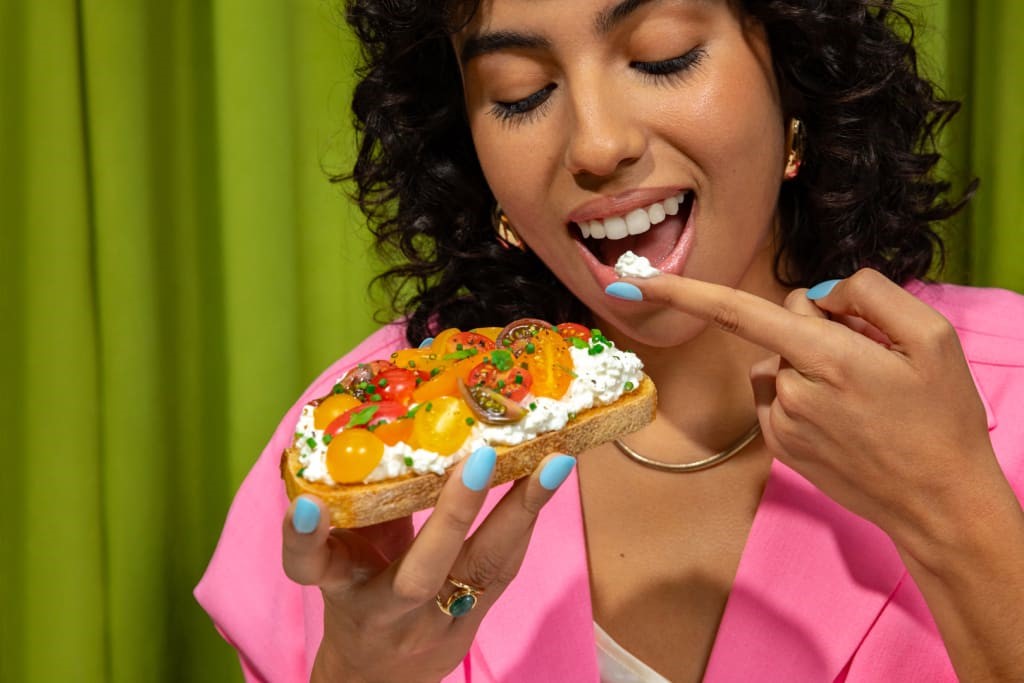
Merrill sought to create a product free of preservatives, gums, or any artificial ingredients (and he sought to do so in a way that would put the “good” in “Good Culture” by creating better conditions for animals).
Which is all admirable—but often the purview of flash-in-the-pan brands that never expand beyond niche health food stores. So how’d he pull it off?
Merrill knew from the get-go that he was working with a polarizing product, particularly when it came to the texture of cottage cheese, which can throw people off if it’s too watery or chunky. So he began in his own kitchen. He tested everything he could find on the market, analyzing factors like the ratio of cream to curd, and then began to develop a sensory profile and experiment with flavor combinations, from savory ingredients to fruit. With his ideal mix in hand, he approached co-packers (companies that package goods on contract, effectively bringing them to life and market). And he hit wall after wall.
“When you’re someone who has no history in dairy—you don’t have any volumes, you don’t have any distribution yet, you’re just a guy with a dream and a little business plan that he made in his house—it’s very hard to get these co-packers to want to work with you.”
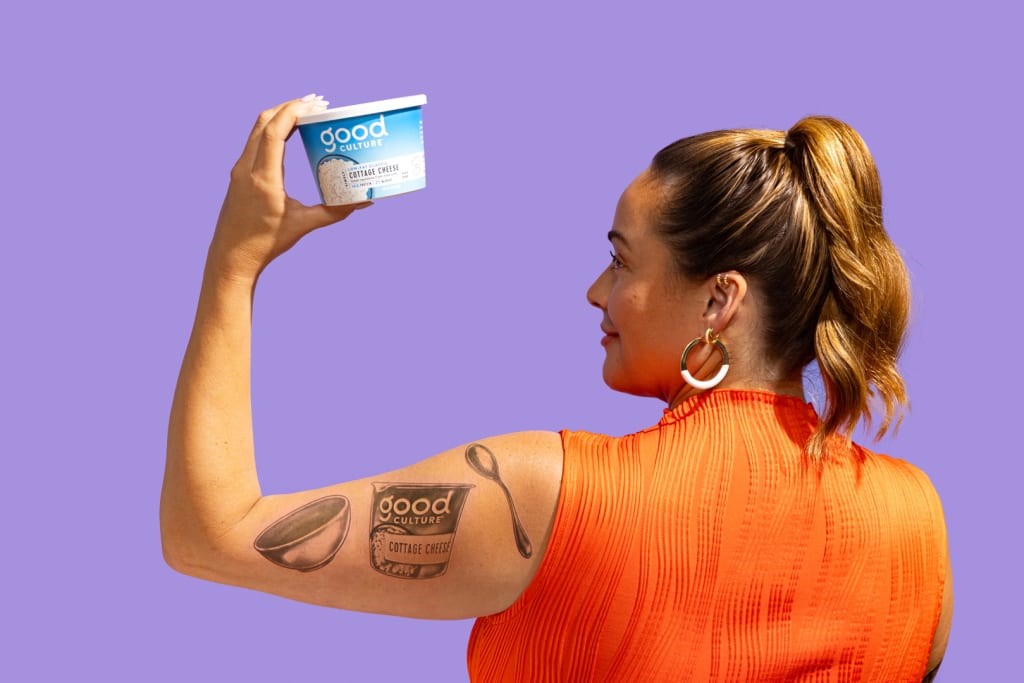
After four months of phone calls and knocking on doors, he found a small farmer-owned co-op in Wisconsin that was willing to work with a young team and agreed with his theory that the space was ripe for disruption. They went back and forth for months of R&D, and produced the first run of Good Culture just before Natural Products Expo West (the industry’s annual trade show bonanza) in March 2015.
From a design standpoint, Merrill says the brand strove for a “modern harvest” aesthetic—contemporary vibes that would contrast the dated-looking offerings on shelves while also nodding to the artisanal elements of the brand. He wanted it to feel sophisticated and clean so that it would speak to a younger consumer demo (more on that in a moment)—and the design does just that, notably with a somewhat quirky modern logo that stands apart from its legacy competitors, more craft yogurt than curd classic. Strategically, since most cottage cheese comes in tubs, he also wanted to offer single-serve cups.
He didn’t know what to expect ahead of Expo West. And so it likely came as a surprise when someone from a major retailer showed up with the number of his booth written in marker on the back of her hand.
“I was in a really small, little crappy part of the convention center because that was all we could afford,” Merrill says. “She was like, ‘Everyone’s talking about you on the main floor.’”
Many others followed.
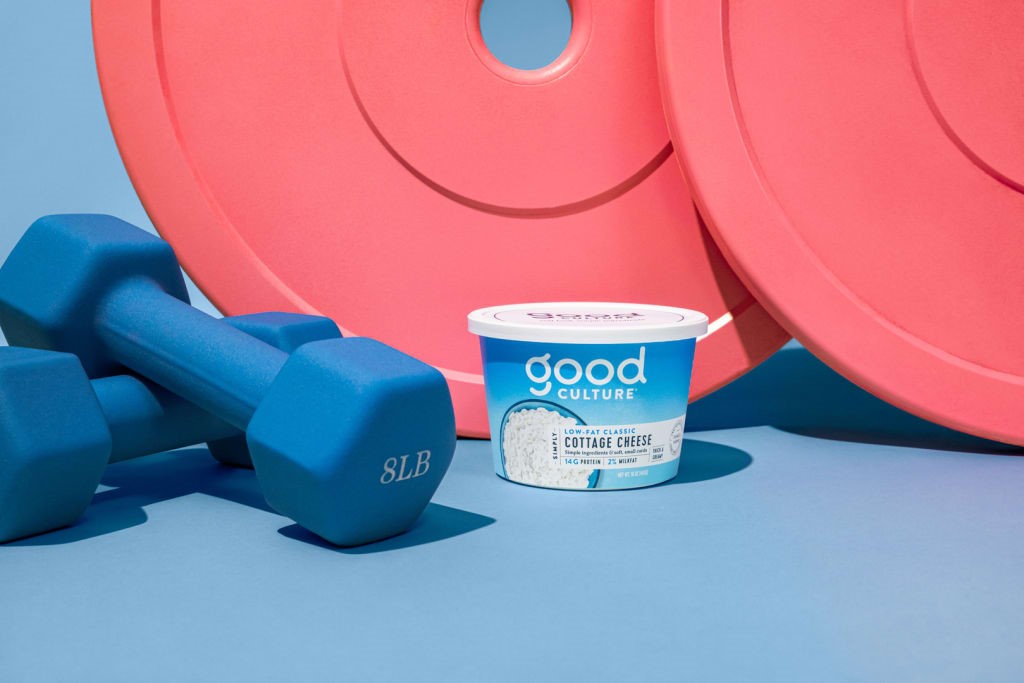
THE CULT OF GOOD CULTURE
Ultimately, Good Culture was a hit, and Merrill says he left the event with distribution at Whole Foods and Sprouts. In 2016, General Mills and others took part in a $2.1 million seed round. By 2022, Good Culture wrapped up a $64 million Series C.
And then TikTok happened.
It’s easy to say that Good Culture was in the right place at the right time. It was. But the company had been crafting its product to appeal to a younger demographic since its inception, from its branding and ingredients to its focus on animal welfare and sustainability. As a result, Merrill says it had already acquired an entirely new audience segment while traditional cottage cheese companies were fighting over the same legacy consumers.
In 2023, TikTokers began obsessively touting a love of cottage cheese—and sharing off-the-wall recipes for everything from cottage cheese ice cream to pancakes to mustard combos to flatbreads—and the old diet staple suddenly went viral.
“We were the brand that was at the core of that content that was being pushed out there, which was phenomenal for us,” Merrill says of the movement, which continues to this day. “It created a groundswell.”
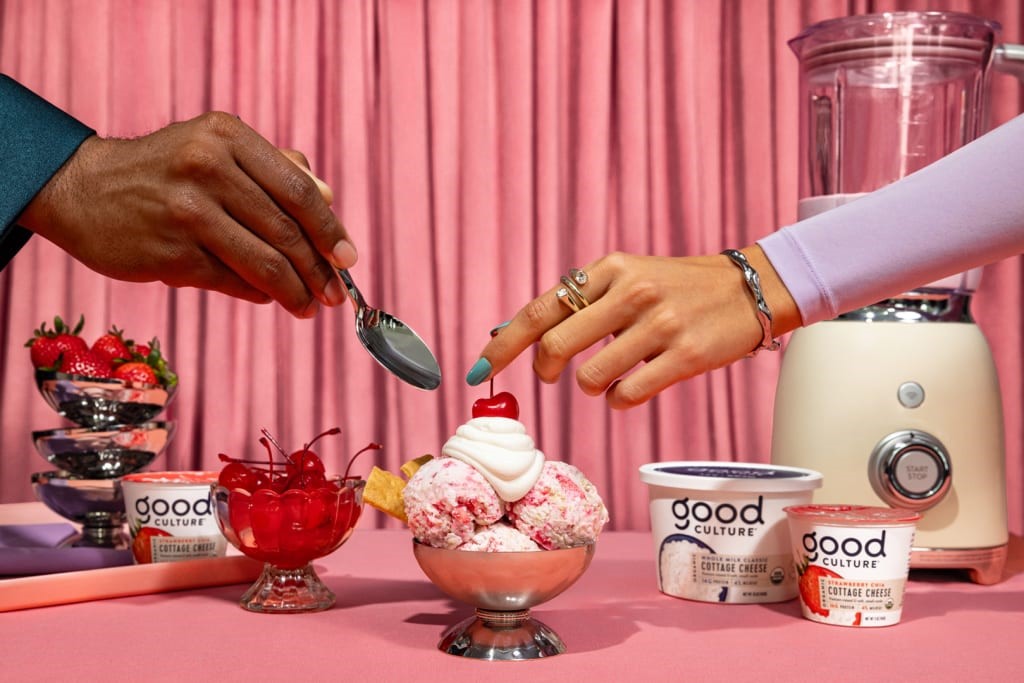
Like it had done previously with romance novels, TikTok made cottage cheese cool and mainstream again—and Good Culture was heavily featured. (Not long ago, the brand even called in creative agency &Walsh to help capture the zeitgeist.)
What does that boom look like in numbers?
According to John Crawford, SVP of client insights for the dairy category at Circana, TikTok sent volume growth skyrocketing in the second quarter of 2023, growing 7.7%—and reversing nine straight quarters of declining volume. It jumped again in the third quarter of 2023 to 13.7%, and has maintained a range in the 13% realm through today. Reps for Good Culture say that last year the company projected 35% growth and ended up at 80%. Currently, it’s growing at a rate of 90%.
“Cottage cheese growth has been phenomenal,” Crawford tells me in an email exchange. “It absolutely came as a surprise when it started.”
Media outlets have dubbed cottage cheese as “having a moment.” Would he agree?
“Maybe even more than a moment,” he writes. “Six straight quarters of volume gains, with growth expected to continue.”
Given the fickle nature of the internet and food trends at large, I ask Crawford and Merrill whether they see all of this as a bubble.
“Initially when the trends started, I expected them to be short-lived and more of a fad, but the additional usage ideas for cottage cheese increased long-term consumption and turned the fad into a lasting trend,” Crawford says. “I expect growth to continue, but moderately, as the category wraps on two years of double-digit growth. I do believe the fundamental nature of cottage cheese appealing to younger consumers and providing new usage occasions positions the category for longer-term strength.”
For his part, Merrill says Good Culture is at the nexus of a series of converging mega trends, from sustainability to clean labels—and, well, cottage cheese is an old product. Perhaps ironically, given all the disruption at hand, he sees that as a good thing.
“This isn’t like some new gimmicky ingredient or food that we introduced that no one knew,” he says. “Cottage cheese has been around for a long time. It’s just been reintroduced in a really impactful way, and people are finally taking note of the overlooked superfood that it is.”
ABOUT THE AUTHOR
Fast Company
(15)

